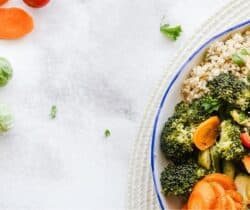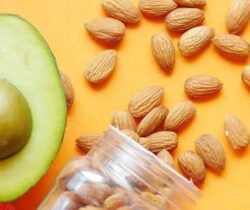Introduction to Extra Virgin Olive Oil
Extra virgin olive oil (EVOO) became popular about fifty years ago, when the health benefits of the Mediterranean diet became well known. However, the olive tree has held an important place in Mediterranean culture for thousands of years. It was a symbol of peace to both the Greeks and the Romans, and the ancient Athenians prized its oil for its uses in cooking, medicine and even in religious ceremonies.
The traditional production method of olive oil consists of three basic steps:
- Grinding – the olives are crushed into a paste.
- Pressing – the paste is spread onto fibrous mats and pressed.
- Decantation – the oil is separated from the water and solids in the paste.
The olive oil that was produced by the Greeks and Romans using this method was probably similar to what is known today as extra virgin olive oil (often abbreviated to EVOO).
There are three main types of olive oil. They can be categorised by their extraction processes.
- Extra virgin olive oil – the extraction process is called ‘cold pressing’ because no heat is used. No chemicals are used either, which is why EVOO is considered to be unrefined.
- Virgin olive oil – this is extracted by pressing mashed olives a second time. Again, no heat or chemicals are involved.
- Olive oil – this is a mixture of virgin olive oil and olive oil that is refined with heat and chemicals.
Health Benefits of Extra Virgin Olive Oil
EVOO is rich in antioxidants, which can prevent the development of chronic diseases. It also contains healthy fats, mainly oleic acid, which can reduce cholesterol levels, blood pressure and inflammation.
Although EVOO is high in calories, it can help in weight management as part of a balanced diet. EVOO’s healthy fats help you feel full. This can lead to you eating less and help with weight maintenance or loss.
Nutritional Value and Composition
In terms of extra virgin olive oil’s nutritional content, a tablespoon contains around 120 calories. EVOO is high in healthy fats, particularly oleic acid. Unhealthy saturated fats account for 14% of the total calories and polyunsaturated fats make up 11%.
Extra virgin olive oil is a good source of Vitamin E, which is essential for healthy skin and eyes, as well as for strengthening the immune system. It also contains Vitamin K, which is necessary for blood clotting and bone health.
It is important to note that, while extra virgin olive oil offers many health benefits, it should be consumed in moderation due to its high calorie density.
Extra Virgin Olive Oil in Cooking
Extra virgin olive oil (EVOO) is versatile in the kitchen.
It can be used:
- in vinaigrettes and dressings
- as a marinade for meats and vegetables
- for sautéing
- in baking as an alternative to traditional fats.
EVOO works with many types of food. Drizzle it over steamed or grilled vegetables to enhance their natural flavours or use it as a dip for bread.
Its flavour is influenced by:
- Location: the soil type, altitude and climate of the region where the olives are grown can impact the flavour of the oil.
- Olive variety: each of the hundreds of different olive varieties provides a unique flavour.
- Climate: the weather conditions during the growing season can affect the taste of the oil.
- Closeness to other plants: other plants near the olive trees can influence the flavour of the oil.
- Farming techniques: the methods used to grow, harvest and process the olives can also impact the flavour.
- Storage facilities: how the oil is stored after extraction can influence its taste.
When it comes to selecting a high-quality EVOO, look for those with a recent harvest date, to make sure they are fresh. Choose oils in dark glass bottles, which give protection from light and heat. Oils from countries that contain well-known growing regions such as Spain, Italy, Greece, Tunisia, Turkey and Australia are likely to be of good quality. You can find a list of local extra virgin olive oil brands on The Australian Olive Associations website.
Myths and Misconceptions
Despite its popularity, there are misconceptions about the use and quality of extra virgin olive oil.
Myth 1: EVOO has a low smoke point.
- A cooking oil’s smoke point refers to the temperature at which it starts to smoke.
- EVOO’s smoke point ranges between 177°C to 210°C, which is suitable for most cooking methods, including sautéing and baking.
Myth 2: EVOO loses its nutritional value and health benefits when heated.
- While heat can change the flavour of EVOO, its nutritional value and health benefits remain the same.
Myth 3: Colour indicates quality.
- The colour of EVOO can range from green to gold, but this is not an indicator of quality.
Myth 4: EVOO often contains chemicals.
- Genuine EVOO should be the pure juice of olives, extracted without chemicals and bottled without additives.
- Look for certifications from reputable organisations such as the International Olive Council or regional certifications like Protected Designation of Origin.
Extra virgin olive oil is an excellent addition to your diet and brings many health benefits, particularly in terms of heart health, managing weight and preventing chronic diseases. Choosing extra virgin olive oil as your main source of dietary fat, as well as eating a healthy diet, can reduce your risk of chronic disease development.
The Life! program can help.
Life! is a free healthy lifestyle program that helps you improve your eating habits, increase your physical activity and manage stress. The program is for people who are at risk of developing type 2 diabetes, heart disease and stroke.
Life! is run by experienced health professionals, including dietitians and exercise physiologists, who guide and support you to make healthy lifestyle changes.
The program includes 7 sessions delivered over a 12-month period. You can choose from a group course or our telephone health coaching service. Learn more about the Life! program.
You can check your eligibility for the Life! program by taking a quick online test here.





